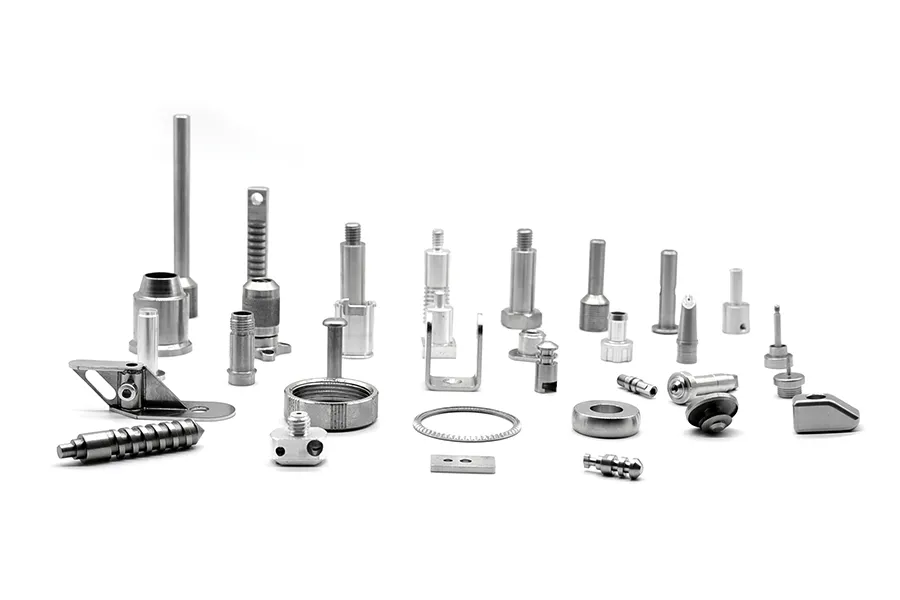10 Helpful Tips of CNC Machining Aerospace Parts
When machining aerospace parts, precision, quality, and adherence to stringent requirements are of utmost importance. Here are some essential tips to keep in mind for machining aerospace parts:
- Material Selection: Use aerospace-grade materials such as aluminum alloys, titanium alloys, stainless steel, or composites that meet the specific requirements of the aerospace industry. Consider the material’s properties, including strength, weight, corrosion resistance, and thermal characteristics.
- CAD/CAM Programming: Utilize advanced CAD/CAM software to develop accurate and optimized machining programs. Ensure that the programming accounts for complex geometries, tight tolerances, and critical features of the aerospace parts.
- CNC Machine Capability: Use CNC machines with high precision, rigidity, and multi-axis capabilities (3-axis, 4-axis, or 5-axis) to achieve the required complexity and accuracy for aerospace parts. The machines should have high spindle speeds, advanced control systems, and adequate tool change capabilities.
- Cutting Tools and Tooling Selection: Select high-quality cutting tools and tooling systems that are specifically designed for aerospace machining. Consider factors such as tool material, geometry, coating, and coolant delivery to ensure optimal performance, tool life, and surface finish.
- Cutting Parameters Optimization: Optimize cutting parameters, including cutting speed, feed rate, depth of cut, and coolant application, based on the material, part geometry, and desired surface finish. Balance the parameters to achieve efficient material removal, minimize tool wear, heat generation, and vibration.
- Fixturing and Workholding: Design and develop precise and reliable fixtures and workholding solutions that securely hold the aerospace parts during machining operations. Ensure proper alignment, stability, and accessibility for machining, while minimizing part deflection.
- Quality Control and Inspection: Implement rigorous quality control measures at various stages of the machining process to ensure that the aerospace parts meet the required specifications. Conduct dimensional checks, surface finish analysis, and utilize non-destructive testing (if necessary) to ensure part integrity and compliance.
- Documentation and Traceability: Maintain comprehensive documentation and traceability records throughout the machining process. This includes material certifications, inspection reports, machining parameters, and any other relevant data to ensure traceability and conformity with aerospace industry standards.
- Compliance and Certification: Adhere to industry-specific regulations and certifications, such as AS9100 for quality management systems, to ensure compliance with aerospace industry standards. Familiarize yourself with the specific requirements and ensure that your machining processes and facilities meet the necessary compliance criteria.
- Continuous Improvement: Strive for continuous improvement by analyzing machining performance, identifying areas for enhancement, and implementing corrective actions. Regularly review processes, seek feedback from customers, and invest in advanced technologies to stay at the forefront of aerospace machining capabilities.
Working with experienced CNC machining suppliers that have a strong track record in the aerospace industry is highly recommended. Their expertise and knowledge can help ensure successful machining of aerospace parts while meeting the stringent quality and precision requirements.
Advantages of CNC machining Aerospace Parts
CNC machining offers several advantages when it comes to manufacturing aerospace parts. Here are some key advantages of CNC machining for aerospace parts production:
- Precision and Accuracy: CNC machining provides exceptional precision and accuracy, allowing for the production of complex aerospace parts with tight tolerances. Computer-controlled machines eliminate human error and ensure consistent and repeatable results, meeting the stringent requirements of the aerospace industry.
- Versatility: CNC machines can produce a wide range of aerospace parts, from simple to highly complex geometries. They can handle various materials such as aluminum alloys, titanium alloys, stainless steel, and composites, offering versatility in part design and manufacturing.
- Flexibility and Customization: CNC machining allows for easy customization of aerospace parts. Changes to designs or modifications can be quickly implemented by updating the machining program. This flexibility is particularly valuable in the aerospace industry, where parts may require constant refinement and adaptation.
- Efficiency and Productivity: CNC machining is highly efficient, enabling the production of aerospace parts with minimal setup and changeover times. Once the machining program is developed and optimized, parts can be produced in large quantities with consistent quality and reduced lead times.
- Complex Geometry: CNC machines can handle intricate and complex part geometries that may be difficult or impossible to produce using traditional machining methods. This capability is essential in aerospace applications where aerodynamics, weight reduction, and structural integrity are critical factors.
- Consistent Quality: CNC machining ensures consistent quality across the entire production run. The computer-controlled machines precisely follow the programmed instructions, minimizing variations and errors. This level of control helps maintain the integrity and reliability of aerospace parts.
- Cost-Effective for Small to Medium Production Runs: CNC machining is a cost-effective solution for small to medium production runs of aerospace parts. It eliminates the need for expensive tooling setups and allows for efficient utilization of materials, reducing waste and overall production costs.
- Rapid Prototyping: CNC machining enables the rapid production of prototypes for aerospace parts. This allows engineers and designers to test and validate designs before moving into full-scale production, saving time and cost in the product development cycle.
- Integration with CAD/CAM Software: CNC machines can seamlessly integrate with computer-aided design (CAD) and computer-aided manufacturing (CAM) software, facilitating efficient part programming, simulation, and optimization. This integration streamlines the manufacturing process and enhances design-to-production workflow.
- Quality Control and Traceability: CNC machining provides opportunities for rigorous quality control and traceability of aerospace parts. With the use of advanced measurement systems and inspection techniques, manufacturers can ensure compliance with industry standards and trace the production history of each part.
Overall, CNC machining offers aerospace manufacturers the ability to produce high-quality, precise, and complex parts efficiently. Its versatility, flexibility, and consistent performance make it a preferred manufacturing method in the aerospace industry.

